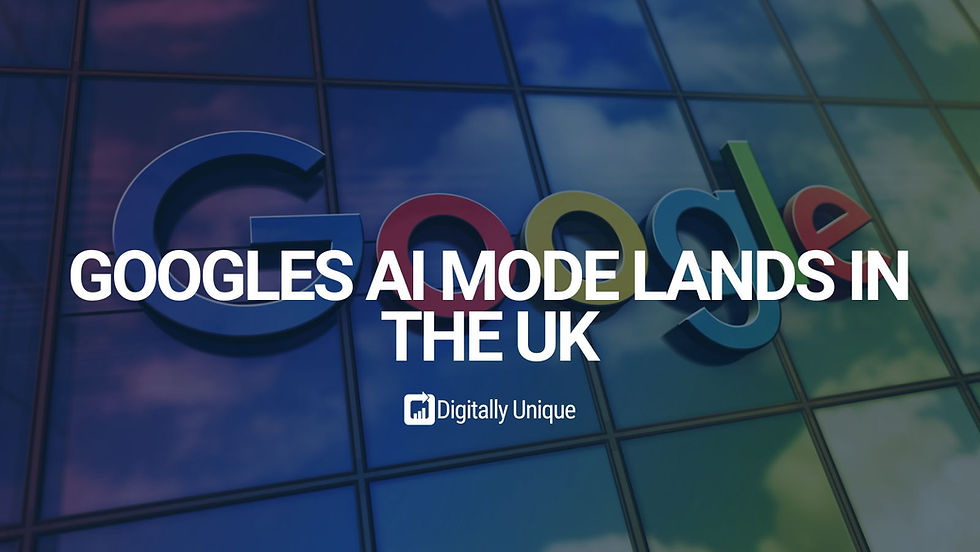AI Mode lands in the UK: what it changes for search journeys and CTR
- Jessica Gibbins

- Aug 18
- 2 min read

At a glance
Live in the UK – Google’s AI Mode began rolling out to UK searchers on 28 July 2025.
Deeper journeys in the SERP – conversational follow-ups and source links keep people exploring without restarting a search.
CTR will rebalance – fewer quick clicks on simple facts, more qualified traffic on complex, high-intent tasks, according to early guidance from Google.
Google has switched on AI Mode for UK users, marking the biggest change to Search since universal results. The feature, announced for Britain on 28 July 2025, adds an AI-generated summary at the top of the results page, along with prominent links to the web. Google positions this as a way to handle longer, multi-part questions, rather than a replacement for traditional results. Read Google’s UK announcement.
Unlike earlier experiments that lived inside Search Labs, the UK rollout arrived as a mainstream feature. For searchers, that means fewer dead ends. Ask a complex brief, then refine with follow-ups, filters and suggested angles the moment the page loads. Under the bonnet, AI Mode breaks a question into sub-topics, looks them up in parallel and returns a single narrative answer with citations and next steps. That design nudges people into continuous discovery instead of pogo-sticking between tabs.
Blogger Outreach
Buy Now
How search behaviour shifts
The immediate impact is behavioural. Queries get longer, and sessions stretch across more pivots in one place. For product research, for example, AI Mode can synthesise the trade-offs between models, pull in specs from multiple sources and then surface retailer links. For “how to” tasks, it outlines steps and points you at detailed guides. Crucially, the module is laced with links back to publishers, and the “explore more” cards still sit below it, so the web remains the destination rather than a footnote. Google Help
What it means for CTR
Click-through rate will not move in one direction for everyone. Expect a redistribution:
Quick facts are more likely to be satisfied in SERP, which could depress shallow informational clicks.
Complex or commercial queries where people need depth should generate fewer but higher-quality clicks, because users reach pages after clarifying intent inside the AI layer. That aligns with Google’s own framing that AI in Search is driving “more queries and higher-quality clicks”. See Google’s analysis here.
Early market coverage also notes that the UK skipped a prolonged Labs phase, so the effects may appear faster than in previous regions. Brands and publishers should expect volatility at query level while patterns settle.
How to protect and grow visibility
Treat AI Mode like a new referrer. Make content easy to quote, cite and expand:
Structure pages with clear, sourceable facts, comparison tables and step-by-steps that the AI layer can surface.
Tighten E-E-A-T signals and schema so your brand is a credible citation.
Target composite intents such as “best for X under £Y with Z”, where AI summaries steer users toward detailed pages rather than ending the journey.
The bottom line: AI Mode changes how people click, not whether they click. Those who publish genuinely helpful, well-structured content stand to gain from more qualified visits as journeys become richer and more conversational.





